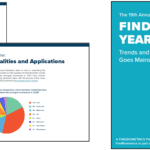 ID confirmation used to be a tedious and occasionally fraught process. Physical documents had to be handed over, and in some cases, particularly skillful forgeries could lead to fraud. But the mobile revolution has changed all that. Virtually every smartphone comes equipped with its own camera, offering consumers a means of capturing and uploading images of themselves and their driver’s licenses, passports, and other ID documents. Meanwhile, facial recognition and document reading software has grown sophisticated enough that these images can be compared against each other, allowing third parties to remotely confirm individuals’ identities. Such practices are starting to catch on in a big way, and some pioneers are already looking past this approach to one in which the phone itself becomes a form of ID.
ID confirmation used to be a tedious and occasionally fraught process. Physical documents had to be handed over, and in some cases, particularly skillful forgeries could lead to fraud. But the mobile revolution has changed all that. Virtually every smartphone comes equipped with its own camera, offering consumers a means of capturing and uploading images of themselves and their driver’s licenses, passports, and other ID documents. Meanwhile, facial recognition and document reading software has grown sophisticated enough that these images can be compared against each other, allowing third parties to remotely confirm individuals’ identities. Such practices are starting to catch on in a big way, and some pioneers are already looking past this approach to one in which the phone itself becomes a form of ID.
Here’s how:
Various businesses are looking to biometric ID reading systems to verify their end users:
Mitek Helps Cryptocurrency Payments Platform to Improve Onboarding, Comply with EU Regulations
Facebook is Acquiring Confirm.io
… And as a result, biometric ID-reading platform providers are doing increasingly brisk business:
Jumio’s Q4 Revenues Up 96% Year-Over-Year
FacePhi Saw Massive Profit Increase in 2017
Meanwhile, governments are already starting to experiment with mobile IDs, with new technologies pointing to their revolutionary potential:
Alabamans Can Now File Taxes Through Biometric Mobile App
Yoti Can Establish Virtual Citizen IDs When Used With Hashgraph
—
(Originally posted on Mobile ID World)








Follow Us